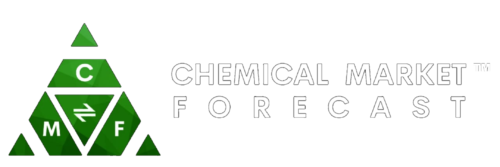Global Chemical Vapor Deposition (CVD) Market Report
Chemical Vapor Deposition (CVD) is a process used to deposit thin films of various materials onto substrates. The process is widely used in the production of electronic and semiconductor devices, optical coatings, and advanced materials. CVD has become an essential technology for many industries, including electronics, energy, and aerospace, due to its ability to produce high-quality films with precise thickness and composition. The increasing demand for high-performance materials and the growth of the electronics industry are the primary factors driving the growth of the CVD market.
The electronics industry is the largest end-user of CVD technology, accounting for a significant share of the market. The demand for CVD in the electronics industry is driven by the need for high-quality coatings and films used in the production of microelectronics, LEDs, solar cells, and other electronic components. The growing demand for advanced consumer electronics, such as smart phones and tablets, is also driving the growth of the CVD market.
The energy sector is another significant end-user of CVD technology. The increasing demand for renewable energy sources, such as solar panels, has led to the adoption of CVD technology for the production of thin-film solar cells. The aerospace industry is also a significant end-user of CVD technology, where it is used in the production of advanced materials used in aircraft components.
Despite its advantages, Chemical Vapor Deposition (CVD) technology also has some drawbacks. Some of the major drawbacks of CVD are: High equipment and operating costs: The equipment required for CVD technology is expensive, and the operating costs can also be high. The cost of deposition can also vary depending on the type of material being deposited, making it difficult to estimate the overall cost of the process. Limited deposition area: CVD is a slow process, and the area that can be coated is limited by the size of the deposition chamber. This limitation can make it difficult to scale up production for large-scale applications. Limited material compatibility: CVD is typically limited to materials that can be deposited at high temperatures. This can make it difficult to deposit certain materials, such as polymers or materials that are sensitive to high temperatures. High energy consumption: CVD requires high temperatures and high energy inputs, which can lead to high energy consumption and greenhouse gas emissions. This can make CVD less environmentally friendly than other deposition technologies. Complex process control: CVD is a complex process that requires precise control of temperature, pressure, and gas flow rates. This can make it difficult to achieve consistent results, especially when depositing complex structures or materials. Toxic gas emissions: The chemicals used in CVD can be toxic, and the process can release hazardous gases into the environment. Proper safety measures and ventilation systems must be in place to ensure worker safety and minimize environmental impact.
The market for CVD is highly competitive, with several key players dominating the market. Some of the major players in the market include ASM International, Lam Research, Applied Materials, Tokyo Electron, and Aixtron. These companies are investing heavily in research and development to develop new and advanced CVD technologies that can meet the evolving needs of the market.
North America and Europe are the largest markets for CVD technology, accounting for a significant share of the global market. The growth of the CVD market in these regions is driven by the presence of major players in the market and the growing demand for advanced materials and coatings in various industries.
The Asia-Pacific region is expected to grow at the highest CAGR during the forecast period. The growth of the CVD market in the region is driven by the increasing demand for electronics and renewable energy sources, as well as the growing investments in research and development by companies operating in the region.
Table of Contents
Global Chemical Vapor Deposition (CVD) Market Report
1 Market Introduction of Chemical Vapor Deposition (CVD) Market Report
2 Market Segmentation of Chemical Vapor Deposition (CVD) Market Report
2.1 Chemical Vapor Deposition (CVD) Market Segmentation By Region
2.2 Chemical Vapor Deposition (CVD) Market Segmentation By Type
2.3 Chemical Vapor Deposition (CVD) Market Segmentation By Crop Type
3 Cost Structure of Chemical Vapor Deposition (CVD) Market Report
4 Country Analysis of Chemical Vapor Deposition (CVD) Market Report
4.1 China
4.1.1 Chemical Vapor Deposition (CVD) Market Forecast & Size in China
4.1.2 Chemical Vapor Deposition (CVD) Market Trends & Analysis in China
4.1.3 Key Chemical Vapor Deposition (CVD) companies in China
4.1.4 Regulatory Framework of Chemical Vapor Deposition (CVD) Market in China
4.2 Germany
4.2.1 Chemical Vapor Deposition (CVD) Market Size in Germany
4.2.2 Chemical Vapor Deposition (CVD) Market Trends & Analysis in Germany
4.2.3 Key Chemical Vapor Deposition (CVD) companies in Germany
4.2.4 Regulatory Framework of Chemical Vapor Deposition (CVD) Market in Germany
4.3 France
4.3.1 Chemical Vapor Deposition (CVD) Market Size in France
4.3.2 Chemical Vapor Deposition (CVD) Market Trends & Analysis in France
4.3.3 Key Chemical Vapor Deposition (CVD) companies in France
4.3.4 Regulatory Framework of Chemical Vapor Deposition (CVD) Market in France
4.4 Italy
4.4.1 Chemical Vapor Deposition (CVD) Market Size in Italy
4.4.2 Chemical Vapor Deposition (CVD) Market Trends & Analysis in Italy
4.4.3 Key Chemical Vapor Deposition (CVD) companies in Italy
4.4.4 Regulatory Framework of Chemical Vapor Deposition (CVD) Market in Italy
4.5 Netherland
4.5.1 Chemical Vapor Deposition (CVD) Market Size in Netherland
4.5.2 Chemical Vapor Deposition (CVD) Market Trends & Analysis in Netherland
4.5.3 Key Chemical Vapor Deposition (CVD) companies in Netherland
4.5.4 Regulatory Framework of Chemical Vapor Deposition (CVD) Market in Netherland
4.6 Russia
4.6.1 Chemical Vapor Deposition (CVD) Market Size in Russia
4.6.2 Chemical Vapor Deposition (CVD) Market Trends & Analysis in Russia
4.6.3 Key Chemical Vapor Deposition (CVD) companies in Russia
4.6.4 Regulatory Framework of Chemical Vapor Deposition (CVD) Market in Russia
4.7 Canada
4.7.1 Chemical Vapor Deposition (CVD) Market Size in Canada
4.7.2 Chemical Vapor Deposition (CVD) Market Trends & Analysis in Canada
4.7.3 Key Chemical Vapor Deposition (CVD) companies in Canada
4.7.4 Regulatory Framework of Chemical Vapor Deposition (CVD) Market in Canada
4.8 Mexico
4.8.1 Chemical Vapor Deposition (CVD) Market Size in Mexico
4.8.2 Chemical Vapor Deposition (CVD) Market Trends & Analysis in Mexico
4.8.3 Key Chemical Vapor Deposition (CVD) companies in Mexico
4.8.4 Regulatory Framework of Chemical Vapor Deposition (CVD) Market in Mexico
4.9 Singapore
4.9.1 Chemical Vapor Deposition (CVD) Market Size in Singapore
4.9.2 Chemical Vapor Deposition (CVD) Market Trends & Analysis in Singapore
4.9.3 Key Chemical Vapor Deposition (CVD) companies in Singapore
4.9.4 Regulatory Framework of Chemical Vapor Deposition (CVD) Market in Singapore
4.10 United Kingdom
4.10.1 Chemical Vapor Deposition (CVD) Market Size in United Kingdom
4.10.2 Chemical Vapor Deposition (CVD) Market Trends & Analysis in United Kingdom
4.10.3 Key Chemical Vapor Deposition (CVD) companies in United Kingdom
4.10.4 Regulatory Framework of Chemical Vapor Deposition (CVD) Market in United Kingdom
4.11 Switzerland
4.11.1 Market Size in Switzerland
4.11.2 Market Trends & Analysis in Switzerland
4.11.3 Key Chemical Vapor Deposition (CVD) companies in Switzerland
4.11.4 Regulatory Framework of Chemical Vapor Deposition (CVD) Market in Switzerland
4.12 Brazil
4.12.1 Market Size in Brazil
4.12.2 Market Trends & Analysis in Brazil
4.12.3 Key Chemical Vapor Deposition (CVD) companies in Brazil
4.12.4 Regulatory Framework of Chemical Vapor Deposition (CVD) Market in Brazil
4.13 USA
4.13.1 Market Size in US
4.13.2 Market Trends & Analysis in US
4.13.3 Key Chemical Vapor Deposition (CVD) companies in US
4.13.4 Regulatory Framework of Chemical Vapor Deposition (CVD) Market in US
4.14 Japan
4.14.1 Market Size in Japan
4.14.2 Market Trends & Analysis in Japan
4.14.3 Key Chemical Vapor Deposition (CVD) companies in Japan
4.14.4 Regulatory Framework of Chemical Vapor Deposition (CVD) Market in Japan
4.15 South Korea
4.15.1 Market Size in South Korea
4.15.2 Market Trends & Analysis in South Korea
4.15.3 Key Chemical Vapor Deposition (CVD) companies in South Korea
4.15.4 Regulatory Framework of Chemical Vapor Deposition (CVD) Market in South Korea
4.16 India
4.16.1 Market Size in India
4.16.2 Market Trends & Analysis in India
4.16.3 Key Chemical Vapor Deposition (CVD) companies in India
4.16.4 Regulatory Framework of Chemical Vapor Deposition (CVD) Market in India
4.17 Thailand
4.17.1 Market Size in Thailand
4.17.2 Market Trends & Analysis in Thailand
4.17.3 Key Chemical Vapor Deposition (CVD) companies in Thailand
4.17.4 Regulatory Framework of Chemical Vapor Deposition (CVD) Market in Thailand
4.18 Russia
4.18.1 Market Size in Russia
4.18.2 Market Trends & Analysis in Russia
4.18.3 Key Chemical Vapor Deposition (CVD) companies in Russia
4.18.4 Regulatory Framework of Chemical Vapor Deposition (CVD) Market in Russia
4.19 Malaysia
4.19.1 Market Size in Malaysia
4.19.2 Market Trends & Analysis in Malaysia
4.19.3 Key Chemical Vapor Deposition (CVD) companies in Malaysia
4.19.4 Regulatory Framework of Chemical Vapor Deposition (CVD) Market in Malaysia
4.20 Saudi Arabia
4.20.1 Market Size in Saudi Arabia
4.20.2 Market Trends & Analysis in Saudi Arabia
4.20.3 Key Chemical Vapor Deposition (CVD) companies in Saudi Arabia
4.20.4 Regulatory Framework of Chemical Vapor Deposition (CVD) Market in Saudi Arabia
5 Global Chemical Vapor Deposition (CVD) Market Trends
5.1 Chemical Vapor Deposition (CVD) Market Trends- Key Drivers
5.2 Chemical Vapor Deposition (CVD) Market Trends- Key Restraints
5.3 Chemical Vapor Deposition (CVD) Market Trends- Key Challenges
5.4 Porter’s Five Forces Analysis of Chemical Vapor Deposition (CVD) Market
5.5 PEST Analysis- Chemical Vapor Deposition (CVD) Market
6 Global Chemical Vapor Deposition (CVD) Market Forecast
6.1 Chemical Vapor Deposition (CVD) Market Forecast By Region
6.1.1 North America
6.1.2 Europe
6.1.3 APAC
6.1.4 Middle East
6.1.5 ROW
6.2 Chemical Vapor Deposition (CVD) Market Forecast By Type
6.2.1 Fertilizer
6.2.2 Pesticide
6.3 Chemical Vapor Deposition (CVD) Market Forecast By Crop Type
6.3.1 Fruits & Vegetables
6.3.2 Oilseed and Pulses
6.3.3 Cereals & Grains
6.3.4 Other
7 Supply Chain of the Chemical Vapor Deposition (CVD) Market Analysis
8 Opportunity Analysis
9 Scenario Analysis
10 Key Company Profiles
11 Strategic Conclusions – Chemical Vapor Deposition (CVD) Market Report
12 Abbreviations used in Chemical Vapor Deposition (CVD) Market Report






Reviews
There are no reviews yet.